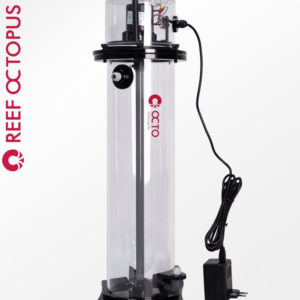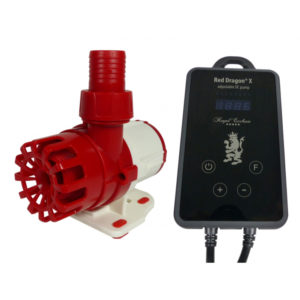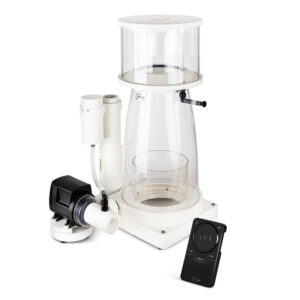Whether you use PVC pipe for a fish tank or another application, there are certain best practices you can follow when glueing it to achieve the best results.
Why I use PVC
When setting up a reef tank I like to hard plumb the tank to the sump with PVC pipe instead of using flexible tubing. If PVC pipe is properly installed it will be much less likely to spring a leak versus vinyl tubing. Yes, vinyl tubing is easier to work with versus PVC since it is flexible and can be bent in many different directions. Hose clamps will help to secure vinyl tubing to a barb fitting but the connection won’t be as bullet proof as PVC.
PVC will provide a long-lasting infrastructure for filtration, although the work can be challenging and require many extra hours of labor. However, I firmly believe it is worth the extra effort. With that said, below are my Top 10 Tips for Glueing PVC pipe. These tips are not listed in order of importance.
#1 Use Purple Primer
When working with PVC I like to use purple primer instead of clear primer. I know purple primer can be sloppy but it will make it much easier to confirm a fitting has been glued. I have used clear primer in the past and had leaks because I thought certain fittings were glued when they were not. By the way, you should always use primer with PVC glue since the primer cleans and preps the PVC. Primer begins the chemical reaction that softens PVC. The softer the outer layer of PVC, the better it will cement in the joint.
#2 Mark Glued Connections
I know, if you use purple primer it should be easy to tell whether all of your connections are secured with glue. However, the purple primer is not always easy to spot. I have made it a habit to mark a fitting right after I glue it with a Sharpie. I like to write “G” for glue 🙂 Note, in many states plumbing inspectors will look for primer and only pass you if they see liberal use on all joints. Of course plumbing for a fish tank is not usually subject to this type of inspection.
#3 Measure 2X Before Cutting Pipe
As carpenters would say, measure twice and cut once. I highly recommend doing this when working with PVC pipe. Remember, you will need to account for how much the pipe will slide into a fitting.

#4 Dry Fit PVC
Do not dry fit PVC to determine the length of a pipe that needs to be cut since the pipe will slide further into a fitting with glue. Use dry fitting to ensure fittings are properly lined up. For instance, a ninety degree 1″ elbow may have to be at a certain angle on a pipe to connect that pipe to the next fitting. I use dry fitting in this instance and mark both the pipe and fitting with two parallel lines. This makes it easier to have the fitting in the right place after applying the glue. You don’t have much time to fiddle since the glue dries fast. See next tip 🙂

#5 Be Quick
You have roughly 10 seconds after applying primer before you need to apply the glue. After the glue is put on you have another 30 seconds or so before the connection is rock solid. Be quick when using this stuff! Cure times vary depending on the brand of glue. I have run water through glued pipe three to four hours after applying the glue.

#6 Make Sure Pipe is In All the Way
Use a Sharpie to mark how much the pipe can potentially slide into a fitting. This provides a visual boundary to ensure the pipe is pushed in as far as possible after it is glued. Apply strong pressure to the pipe and fitting after they are glued and hold for ten seconds to keep the pipe from slipping out of the fitting.

#7 Apply Primer & Glue To Both Pipe and Fitting
Don’t try to be neat or cut corners by only applying primer to the pipe. The fitting the pipe goes into needs primer as well. As you may recall, primer helps to soften PVC, allowing for a more solid bond. Additionally, be generous with the glue and apply it to both the pipe and fitting. Don’t worry about any excess. Use a rag to wipe it off.

#8 Have Spare Fittings on Hand + Extra Pipe
Mistakes will happen so I always find it practical to have spare fittings on hand in case a re-do is necessary. If you need five ninety degree 1″ elbows then pick up six just in case. A fitting like this costs about sixty cents so you will not break the bank by purchasing spare parts. The last thing I want to do is jump in the car to head back to the hardware store. It can interrupt the momentum of a project, especially if you screw up when the hardware store is closed. If you do make a mistake, have no spare fittings and the hardware store is closed, all is not lost. You can try this Hail Mary.

#9 Avoid Rough Edges
The bond between a pipe and fitting will be stronger when the edges at the end of the pipe are smooth. To get clean and smooth edges when cutting pipe use a PVC pipe cutter. If you use a saw then make sure you file down the ends of the pipe to remove the rough edges. A pipe cutter doesn’t cost a ton of money and will not only make clean cuts, but save you time.
#10 Be Safe
PVC primer and glue have some pretty powerful fumes so it is wise to work with them either outside or indoors in a well ventilated area. You should also wear a mask and gloves for extra protection.
Final Thoughts
These tips were designed to help minimize mistakes and increase productivity when working with PVC. You don’t have to be a skilled plumber to work with this material. It does help to have patience, a good trait to have for both reef keepers and people who like DIY projects. You know who you are 🙂
Additional Resources
If you would like some help with a new tank build, including help designing a custom aquarium, or help re-configuring your current setup then you can visit this page for more information. And if you are looking to add some equipment, I do sell GHL, Pax Bellum, Reef Octopus Calcium and Kalk Reactors and Royal Exclusiv products, including Dreamboxes, which is the equipment I use and recommend. I also sell Reef Brite metal halide and LED fixtures as well as Maxspect & IceCap Gyres.
As for additional insights and information, please explore my many other reef tank and SPS related articles as well as my YouTube channel. For an even deeper dive into reef tank care you can check out my Reef Keeping Master Class. This online course is an immersive and one of a kind educational tool designed to help reef aquarium hobbyists build and maintain a beautiful SPS reef tank. The course is a series of video presentations with some supplemental video from my YouTube channel. There are also quizzes to help students retain and understand the information presented in the course.
Need some frags…..I can help with that as well 🙂 Please visit my SPS Frag store to see what is available.










